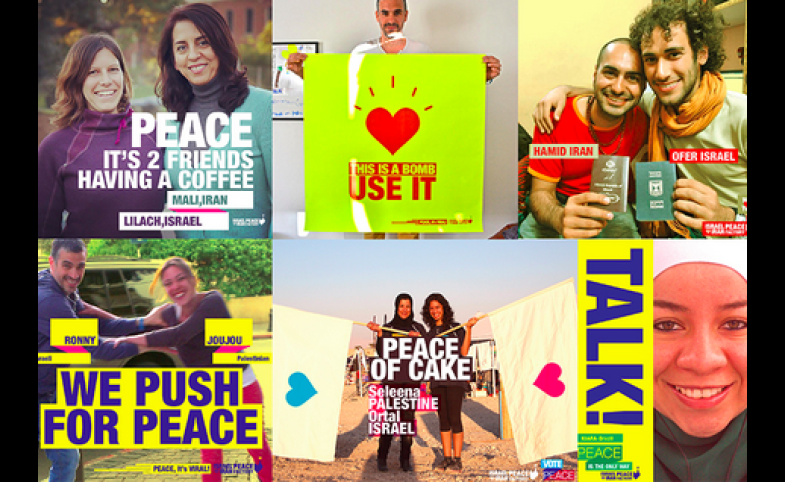Professor Yasushi Watanabe, one of Japan's most prominent experts in public diplomacy, has just released his Handbook of Cultural Security. This handbook explores the interplay between culture, society and security in...
KEEP READINGThe CPD Blog is intended to stimulate dialog among scholars and practitioners from around the world in the public diplomacy sphere. The opinions represented here are the authors' own and do not necessarily reflect CPD's views. For blogger guidelines, click here.

Can an Ancient Artifact Promote Contemporary Dialogue?
This week at CPD, we hosted Dr. Timothy Potts, the director of the J. Paul Getty Museum, who discussed the Cyrus Cylinder as a cultural icon and museums as vehicles for promoting global dialogue. Potts shared with us the history and meaning of the Cylinder; a clay foundation deposit no larger than a loaf of bread inscribed following Cyrus the Great’s incorporation of Babylon into the Persian Empire in 539 BCE. While ancient rulers of the time had many of these foundation deposits inscribed and laid within their public edifices, the Cyrus Cylinder was, and is, different. What sets the Cylinder apart from this ancient tradition is one particular paragraph, sentences 28 to 34, which house a very important description of Cyrus’ Babylonian Conquest:
...I sent back to their places....I collected together all of their people and returned them to their settlements...
No other leader of the time boasted the release of people to go back to their homes, and worship the god or gods in which they believe. This phrase is now taken to be the first declaration of religious tolerance in history, and some scholars have gone as far as to say it’s the first declaration of human rights. Additionally, the Cylinder corroborates the Hebrew Book of Ezra's description of Cyrus the Great having released the Jewish people from their exile in Babylon and for sending them back to Jerusalem to rebuild Solomon’s Temple.
While world renowned museums like the Getty, Smithsonian, Louvre, British Museum and others serve as vehicles for our global cultural heritage, can the artifacts they hold lead to the betterment of state-to-state, people-to-people, and state-to-people relationships?
During the discussion of the power of museums as keepers and distributors of global culture, I thought that there was something more to be said about public diplomacy and the Cyrus Cylinder. Take a look at some of the loudest international rhetoric today, the proclamations by Israeli and Iranian leaders, and the enemy status the two countries place on each other. Glimpse back 2500 years to the beginnings of the Persian Empire. It was Cyrus the Great of Persia who released the Jewish people from exile back to Judah. Now in the 21st century it is the modern Persian government threatening the destruction of the modern Jewish state. It is Israel threatening attack in order to prevent Iran from acquiring nuclear weapons. But bring the Cylinder for a viewing by Persians and Jews, and they will both praise Cyrus as an ancient ruler who brought greatness to both peoples. Could this ancient artifact, a symbol of tolerance be a key to modern day dialogue?
One of the core tenets of public diplomacy is to share values. It is clear from the global public interest in the Cyrus Cylinder, and reverence shown by both Iranians and Israelis for Cyrus, that the Cylinder is the commonality that public diplomacy practitioners seek out and utilize as a jumping-off point for dialogue about international relations. Museums are not only vessels for understanding our ancient history, but also are tools for bridging divides between ancient peoples in modern times.
The Cylinder isn’t the only proof of shared values and desire for dialogue between the two peoples, just look take a look at the grassroots Israel Loves Iran movement.
This “We Heart You” campaign seeks to connect Israelis and Iranians through visual media, and creates a virtual protest to prevent war and create peaceful relations between the two countries. Could the Cylinder take the movement further? The Cyrus Cylinder could be used as a starting point for dialogue, and public diplomacy practitioners should look towards museums for creative opportunities to share values, reinforce mutuality, and bring about meaningful change for publics and states in conflict.
Visit CPD's Online Library
Explore CPD's vast online database featuring the latest books, articles, speeches and information on international organizations dedicated to public diplomacy.
POPULAR ARTICLES
-
November 13
-
December 17
-
November 25
-
January 2
-
January 2
Join the Conversation
Interested in contributing to the CPD Blog? We welcome your posts. Read our guidelines and find out how you can submit blogs and photo essays >.













